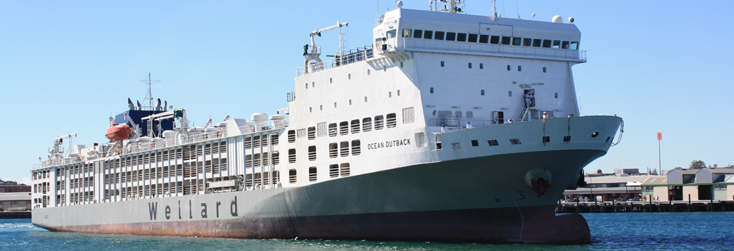
The importance of livestock carrier ships cannot be overestimated in high seas trade. The sea has not only been used by man to travel over vast distances, ingenuity has been used to transport various kinds of goods and commodities.
Transportation by sea has the advantage of conveying commodities in bulk quantities to far flung places. Nearly everything can be transported by sea, even livestock and we have different types of ships for different types of cargoes. International Trade in livestock and livestock products is big business for countries that are involved in it. The trade in this particular sphere is nearly one sixth of the total value of agricultural trade. The largest trade in this particular trade is from Australia to the Middle East.
The ships that are used for transporting livestock are termed as Livestock Carriers. These are special types of ships that are made for transportation of animals like cows, goats, sheep deer, camels and horses. Special type of livestock carriers are even used for transporting live fish and even birds
These are container carriers that have been modified to transport livestock. The size of the vessels vary depending on the type of livestock that has to be transported and the market for which the livestock is intended. When it comes to dead weight tonnage, their capacities fall anywhere between 2000 to 2500. A modern day vessel can carry up to 125,000 sheep on an average.
Transportation of livestock is not easy, especially since the international regulations on the same have become stringent. Animal Rights Organizations maintain a continuous vigil on these transportations. The transportation is expected to be made in humane conditions and through specialized operators.
The number of crew members on such ships are relatively higher than the crew members on any other ship. These crew members are required to be especially trained to handle the particular livestock.
Types of Carriers
The livestock that is transported via the sea route need to be taken care of in a thorough manner. Safety and health of the livestock is a critical issue. The livestock has to be guarded against disease, injury, or death being caused due to any cause. Fire on the ship, or sinking of the ship are dreaded. Ventilation is critical for the health of the livestock. If the pens are not properly ventilated, the toxic gases lead to reduction in the oxygen level causing asphyxiation of the livestock. Based on this criterion, livestock carriers are primarily of two types:
- Open Livestock Carriers: These are open ventilation carriers. The animal pens are placed on the decks and it does not require artificial ventilation systems. The wind condition needs to be monitored continuously for effective ventilation even in the case of open carriers.
- Closed Livestock Carriers: In the case of closed carriers, the pens are placed in the holds of the vessels and as a result ventilation needs to be provided for. Pens in the hold area of the ships also helps to guard the livestock against hostile weather conditions and making feeding it easy.
The modern day carriers of livestock have automated feeding mechanism. The machines move the feed from the silos to the hold area from where it is further distributed to the animals. Conveyor belts and lifts are used to dispose off the manure.
Livestock trade has always had ethical, cultural and economic issues attached to it. Companies whose core business is processed foods and companies involved in trade of livestock stand in opposition to each other.
The various issues involved are often a bone of contention amongst the two industries. The fact that mistreated animals are going to fetch poor proceeds is beyond any contention and doubt. It is in the best interest of companies involved in such trade to ensure more than humane conditions.
How To Book A Cattle Carrier
We keep receiving constant requests on the procedures required to book a cattle carrier for transporting animals. We must say that there is no simple answer to it. It would depend on the port of origin and the port of destination, types of animals which are to be transported and local and international regulations if any pertaining to the same, still a general procedure is outlined below.
- Better consult a local reputed agent.
- Since animals are not lifeless cargo so do not compromise quality for cost in such cases. Poor or cheap cattle transportation carriers might illtreat animals on board
- Get proper insurance and other documentation
- Make sure to check out rules at both places of origin and destination. It should not be that the animals you are transporting are having some special regulations just for example say they might be normal at one place but declared special in other etc etc
- Do consult a few more people before taking a final decision








